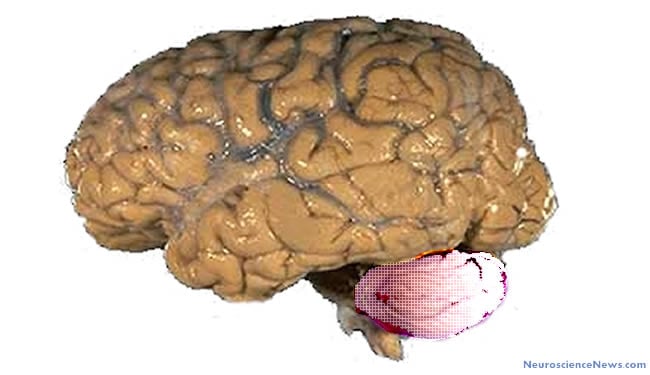University of Granada researchers, in collaboration with other European institutions, are developing a system with ability to interact with humans. The researchers are developing a robotic system with ability to predict the specific action or movement that they should perform when handling an object.
University of Granada researchers have developed an artificial cerebellum (a biologically-inspired adaptive microcircuit) that controls a robotic arm with human-like precision. The cerebellum is the part of the human brain that controls the locomotor system and coordinates body movements.
To date, although robot designers have achieved very precise movements, such movements are performed at very high speed, require strong forces and are power consuming. This approach cannot be applied to robots that interact with humans, as a malfunction might be potentially dangerous.

To solve this challenge, University of Granada researchers have implemented a new cerebellar spiking model that adapts to corrections and stores their sensorial effects; in addition, it records motor commands to predict the action or movement to be performed by the robotic arm. This cerebellar model allows the user to articulate a state-of-the-art robotic arm with extraordinary mobility.
Automatic Learning
The developers of the new cerebellar model have obtained a robot that performs automatic learning by extracting the input layer functionalities of the brain cortex. Furthermore, they have developed two control systems that enable accurate and robust control of the robotic arm during object handling.
The synergy between the cerebellum and the automatic control system enables robot’s adaptability to changing conditions i.e. the robot can interact with humans. The biologically-inspired architectures used in this model combine the error training approach with predictive adaptive control.
The designers of this model are Silvia Tolu, Jesús Garrido and Eduardo Ros Vidal, at the University of Granada Department of Computer Architecture and Technology, and the University of Almería researcher Richard Carrillo.
Notes about this robotics research and article
Contacts: Niceto Luque Sola. University of Granada Department of Computer Architecture and Technology.
Richard Carrillo. University of Granada Department of Computer Architecture and Technology.
Silvia Tolu. University of Granada Department of Computer Architecture and Technology. (currently in Italy).
Source: University of Granada press release
Image Source: Neuroscience News image was made from an image in the public domain. The changes to the cerebellum area are only our sad attempt at art. Feel free to use the image.
Original Research: Abstract for “Adaptive Cerebellar Spiking Model embedded in the control loop: Context switching and robustness against noise” by N. R. Luque, J. A. Garrido, R. R. Carrillo, S. Tolu and E. Ros in International Journal of Neural Systems 21 (5) (2011) 385-401 doi: 10.1142/S0129065711002900







